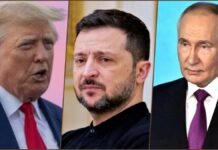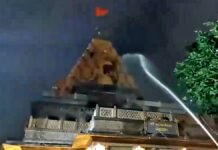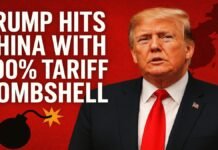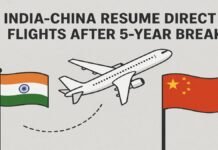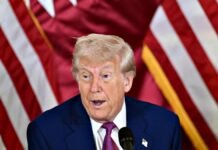
Key Points
- Global conflict zones are multiplying: Russia-Ukraine, Israel-Hamas, India-Pakistan, and tensions in East Asia and Africa.
- If World War 3 breaks out, the world is likely to split into major alliances primarily a US-led Western bloc and a Russia-China-led bloc, with some nations remaining neutral.
- NATO, the US, UK, France, Germany, and allies would likely form one group; Russia, China, North Korea, Iran, and others could form the opposing camp.
- Neutral countries like India, Brazil, South Africa, Switzerland, and Austria may play key roles as mediators or non-combatants.
- The humanitarian, economic, and environmental consequences of a third world war would be catastrophic, especially if nuclear weapons are used.
New Delhi: The world is witnessing escalating conflicts and simmering tensions on multiple fronts:
- Russia-Ukraine War: Ongoing for years, with NATO involvement and increasing Western-Russian hostility.
- Middle East: Israel-Hamas war has destabilized Gaza and drawn in regional powers. Tensions between Israel and Turkey, and Iran’s role, add complexity.
- Asia: India and Pakistan remain on edge after recent military confrontations, with fears of escalation. China’s assertiveness in the South China Sea and Taiwan Strait, and North Korea’s military support for Russia, add to the volatility.
- Africa: Civil wars and extremist violence in Sudan, Mali, Burkina Faso, Niger, and others are destabilizing the continent.
- Other Regions: Tensions remain high in the Taiwan Strait, the Korean Peninsula, and parts of Latin America.
Historical Context: How Past World Wars Shaped Alliances
- World War I (1914-1918): Allies (France, Britain, Russia, US, Italy, Japan) vs. Central Powers (Germany, Austria, Ottoman Empire, Bulgaria).
- World War II (1939-1945): Allies (US, UK, Soviet Union, France, China) vs. Axis Powers (Germany, Italy, Japan). Both wars resulted in tens of millions of deaths and massive global upheaval.
If World War 3 Erupts: How Might the World Divide?
1. The Western Alliance (US-Led Bloc)
Likely members:
- NATO countries: United States, United Kingdom, France, Germany, Italy, Canada, Poland, Norway, Sweden, Finland, and others.
- Asia-Pacific allies: Japan, South Korea, Australia.
- Other partners: Israel, UAE, possibly some Latin American and Southeast Asian democracies.
2. The Russia-China Bloc
Likely members:
- Russia, China, North Korea, Iran: already showing deepening military and economic ties.
- Belarus, Syria, Venezuela, Cuba: traditional Russian allies, though their participation may depend on the conflict’s scope.
- Some African states: May align with Russia or China due to economic or military dependence.
3. Neutral and Non-Aligned Countries
- India, Brazil, South Africa likely to maintain strategic autonomy and neutrality, as seen in their current foreign policies.
- Traditional neutrals: Switzerland, Austria, Ireland, Costa Rica, Turkmenistan, and several microstates.
- Some Gulf states may attempt to remain neutral or play both sides, depending on economic and security interests.
4. Possible Multi-Group Scenario
While two main blocs are most likely, smaller regional alliances or shifting coalitions could emerge, especially if the war drags on or spreads to new regions.
What Would Be the Impact of World War 3?
Humanitarian and Environmental Catastrophe
- Massive casualties: Modern weapons, including nuclear arms, could cause tens of millions of deaths in minutes if used.
- Nuclear winter: Even a limited nuclear exchange could trigger global cooling, agricultural collapse, and starvation for billions.
- Refugee crisis: Displacement on an unprecedented scale, with millions fleeing conflict zones.
- Collapse of healthcare and infrastructure: Overwhelmed systems, disease outbreaks, and long-term trauma for survivors.
Economic and Geopolitical Shocks
- Global recession or depression: Trade routes shut down, supply chains collapse, and financial markets crash, with global GDP potentially shrinking by up to 7.6% in severe scenarios.
- Energy crisis: Oil and gas supplies disrupted, prices skyrocket, and countries scramble for alternatives.
- Food insecurity: Agricultural production plummets, leading to famine and malnutrition worldwide.
- Political upheaval: Governments may fall, authoritarianism could rise, and new power structures could emerge post-war.
Long-Term Global Consequences
- Environmental devastation: Bombings, fires, and nuclear fallout would damage ecosystems, drive species to extinction, and worsen climate change.
- Societal and psychological scars: Generations would be marked by the trauma of war, loss, and displacement.
- Shift in global power: The post-war world could see new alliances, borders, and superpowers, with unpredictable consequences.
India’s Likely Stand: Strategic Autonomy and Neutrality
India has consistently pursued a policy of strategic autonomy not aligning fully with any bloc, but engaging with all major powers to safeguard its interests. In recent conflicts, such as Russia-Ukraine and Israel-Hamas, India has maintained a neutral stance, abstaining from UN votes and calling for dialogue and peace. In a World War 3 scenario, India, along with countries like Brazil and South Africa, is expected to remain non-aligned, potentially playing a mediating or humanitarian role.
While the prospect of World War 3 remains hypothetical, the current global landscape is fraught with risk. If such a conflict were to break out, the world would likely split into powerful alliances, with a handful of countries striving for neutrality. The consequences humanitarian, economic, and environmental would be catastrophic and long-lasting. The only true safeguard is robust diplomacy, international cooperation, and a collective commitment to peace.







